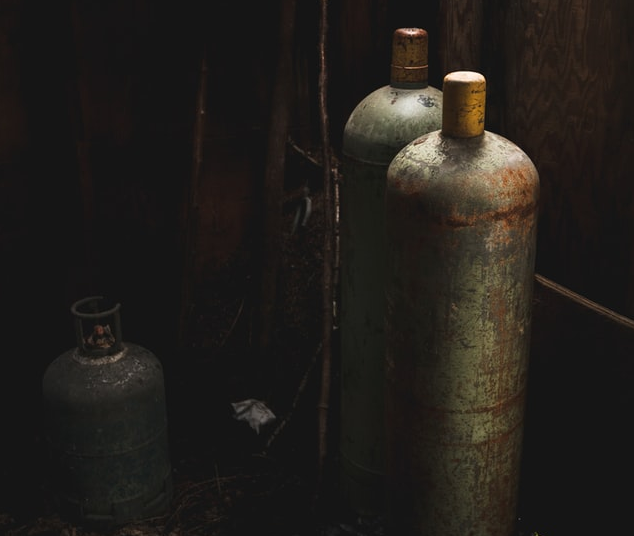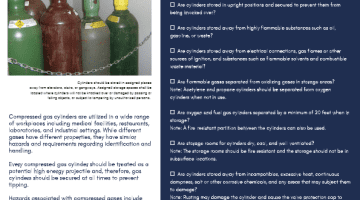Compressed gas cylinders are utilized in a wide range of workplaces including medical facilities, restaurants, laboratories, and industrial settings. While different gases have different properties, they have similar hazards and requirements regarding identification and handling.
Every compressed gas cylinder should be treated as a potential high energy projectile and, therefore, gas cylinders should be secured at all times to prevent tipping.
Hazards associated with compressed gases include oxygen displacement, fires, explosions, and toxic gas exposures, as well as the physical hazards associated with high pressure systems. Special storage, use, and handling precautions are necessary in order to protect against these hazards.
According to the Bureau of Labor Statistics, there were 10 deaths and 3,920 injuries related to pressurized containers in 2016. The Office of Congressional Workplace Rights found 27 occupational hazards related to compressed gases in the 115th Congress.
The handling, use, and storage of compressed gas cylinders in applications other than welding and cutting in general industry workplaces is governed by OSHA’s Compressed Gases Standard, 29 CFR 1910.101.
The standard, at 29 CFR 1910.101(a), requires that gas cylinders be visually inspected to determine that they are in safe condition. Otherwise, Compressed Gas Association Pamphlets (e.g. P-1-1965) address safety and technical information related to the manufacture, transportation, storage, transfilling, and disposal of gases (liquefied, non-liquefied, dissolved, and cryogenic), and the containers and valves that hold compressed gases. (See 29 CFR 1910.1201)
Identification: Ensure that cylinders are clearly identified. Compressed gas cylinders should only be identified by their labels and NOT by the color of the cylinder. Global Harmonized System (GHS) compliant labels will have at least one pictogram indicating the type of hazards for the gas inside each container. The most common types of hazards include oxygen displacement, explosion, and toxic effects as well as the physical hazards of a ruptured cylinder.

